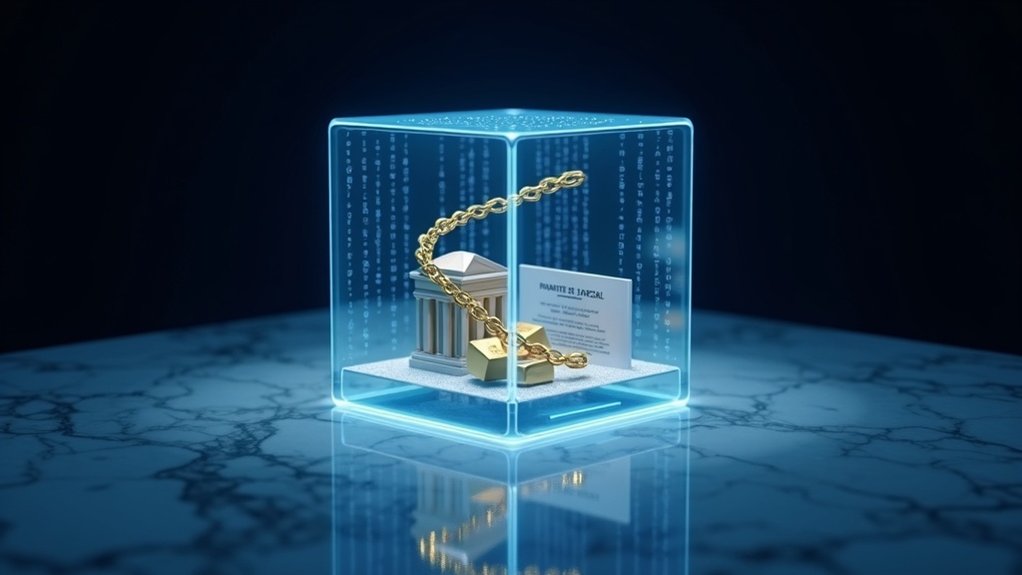Layer 2 networks function as scaling solutions built on top of existing blockchains like Ethereum. They process transactions off-chain, then bundle results back to the main chain. Think of them as express lanes on a congested highway. Same destination, less traffic. They dramatically reduce fees and increase speed without sacrificing security. Projects like Polygon, Arbitrum, and Optimism lead the charge in this space. The blockchain trilemma isn’t going to solve itself.
The cryptocurrency world never sleeps.
It’s constantly evolving, pushing against limitations, breaking through barriers.
Layer 2 networks represent one of these evolutionary leaps.
They’re the answer to a problem that’s plagued blockchains since their inception: scalability.
Layer 2 (L2) refers to any off-chain system built on top of a Layer 1 blockchain like Ethereum or Bitcoin.
Their job? Simple.
Process transactions faster and cheaper without messing with the underlying blockchain’s consensus mechanisms.
Think of Layer 1 as a congested highway and Layer 2 as the express lanes built above it.
Same destination, less traffic.
These solutions inherit security from their parent chains.
That’s the whole point.
They don’t replace Layer 1 security—they leverage it while improving throughput.
Solutions like Polygon utilize zero-knowledge proofs to enable secure cross-chain transactions.
During peak demand periods when the main chain gets clogged and fees skyrocket, L2s provide relief.
Users aren’t stuck paying $50 for a $5 transaction.
That’s just math nobody wants to do.
Layer 2 solutions specifically aim to solve the blockchain scalability trilemma by maintaining decentralization while improving performance.
Several types of L2 solutions exist.
Rollups bundle transactions off-chain, then post compressed data to the mainnet.
State channels allow parties to conduct numerous interactions before settling on the main chain.
Sidechains operate with their own consensus but periodically connect back to Layer 1.
Plasma creates hierarchical child chains.
Each has its tradeoffs.
The security models vary too.
Some use fraud proofs requiring challenge windows (Optimistic rollups), while others employ validity proofs that cryptographically prove correctness (ZK rollups).
No free lunch here—it’s all about tradeoffs.
Performance improvements are substantial.
While Layer 1 networks might process tens of transactions per second, L2 solutions can handle thousands.
Fees drop dramatically too, making cryptocurrency actually usable for everyday transactions.
Adoption continues to grow.
Projects like Polygon, Optimism, Arbitrum, and zkSync have gained significant traction.
The future of blockchain scalability isn’t on Layer 1.
It’s being built one layer up.
Each Layer 2 solution uses smart contracts on the main chain to ensure funds can be safely deposited and withdrawn while transactions happen off-chain.
Frequently Asked Questions
What Are the Tax Implications of Using Layer 2 Networks?
Using Layer 2 networks creates multiple tax headaches.
Moving assets between L1 and L2 might be non-taxable transfers—or not. Receiving wrapped tokens? Taxable. Swapping tokens on L2? Definitely taxable. Staking rewards? Ordinary income. Those juicy protocol airdrops? Taxed immediately.
And recordkeeping? A nightmare. Each bridge crossing, token receipt, and price point must be tracked meticulously.
Multiple L2s make it worse. Tax authorities are watching, especially when rewards flow through centralized exchanges.
Can Layer 2 Solutions Be Hacked?
Yes, Layer 2 solutions can absolutely be hacked. History proves it.
Bridge hacks have caused billions in losses from 2021-2023. Smart contract bugs, compromised keys, and flawed proof systems create juicy targets for attackers.
Rollups have seen exploits affecting sequencers and verifiers. Even Lightning Network has suffered from routing and channel-closing vulnerabilities.
The tech is promising but imperfect. Projects with formal verification and third-party audits tend to fare better. No system is bulletproof.
How Do Layer 2 Networks Impact Crypto Mining?
Layer 2 networks slash miner revenue by taking transactions off-chain. Fewer on-chain transactions mean lower fees for miners. Period.
Instead of processing thousands of small transactions, miners now handle occasional batched settlements from L2s. The economics change dramatically.
Mining hardware ROI suffers when fee income drops, potentially forcing older equipment offline. Mining becomes more volatile too—lumpy settlement fees replace steady transaction flow. Some miners might pivot to offering specialized services to L2 operators just to stay relevant.
Which Wallets Support Layer 2 Networks?
Several wallets support layer 2 networks right out of the box.
MetaMask, Coinbase Wallet, Rainbow, and Argent all offer native L2 integration.
Even Ledger hardware wallets support major L2s like Polygon, Arbitrum, and Optimism.
Other wallets? They need manual setup.
Trust Wallet, Exodus, and MEW require you to add custom RPCs or use bridges.
Not ideal.
There’s also specialized wallets for specific L2s – StarkNet has Braavos, Lightning Network has BlueWallet.
Options everywhere.
Do Layer 2 Networks Require Specialized Hardware?
Most L2 networks don’t need specialized hardware for regular users.
Your phone or laptop works fine.
Node operators typically use standard server specs: multi-core CPU, 16-64GB RAM, and fast SSDs.
The exception? ZK-rollups.
These proof-generating beasts can demand serious muscle – high-end GPUs, hundreds of gigs of RAM, or even custom hardware accelerators.
Optimistic rollups are less demanding.
Bottom line: average users need nothing special. The heavy lifting happens behind the scenes.









